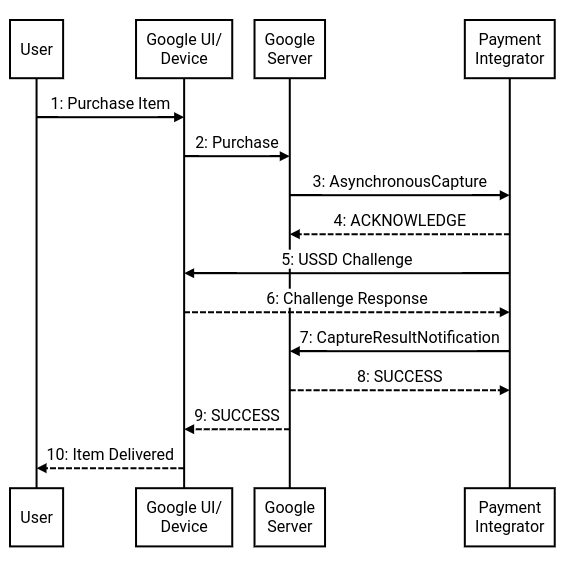Overview
The asynchronous funds transfer flow is used to handle user-initiated payments where the Payment Integrator challenges the user prior to capturing funds.
How the flow works
The diagram below shows a user-initiated purchase.
Purchase flow-User present

The objects in the diagram include the following:
- User: This is the person who wants to purchase something through Google.
- Google UI/Device: The interface, where the customer begins to make a purchase.
- Google Server: The backend server at Google that sends the asynchronous capture command to the Payment Integrator Server.
- Payment Integrator: The backend server of the integrator that acknowledges the asynchronous capture command, challenges the user directly, and responds to Google with the capture result.
In this purchase flow, the user is in session. They begin the flow by starting to purchase an item.
- The User begins to purchase an item through the Google UI.
- The purchase information is sent to the Google Server.
- Google’s Server sends the
AsynchronousCapturerequest (GPT,amount) to the Payment Integrator. - The Payment Integrator sends back an Acknowledge response to the Google Server.
- The Payment Integrator sends a USSD challenge to the User's Device.
- The User completes the challenge and the Device sends the Challenge Response.
- The Payment Integrator sends the
CaptureResultNotification - The Google Server responds with Success to the Payment Integrator.
- The Google Server sends back a Success response to the Google UI.
- The items are delivered to the customer.